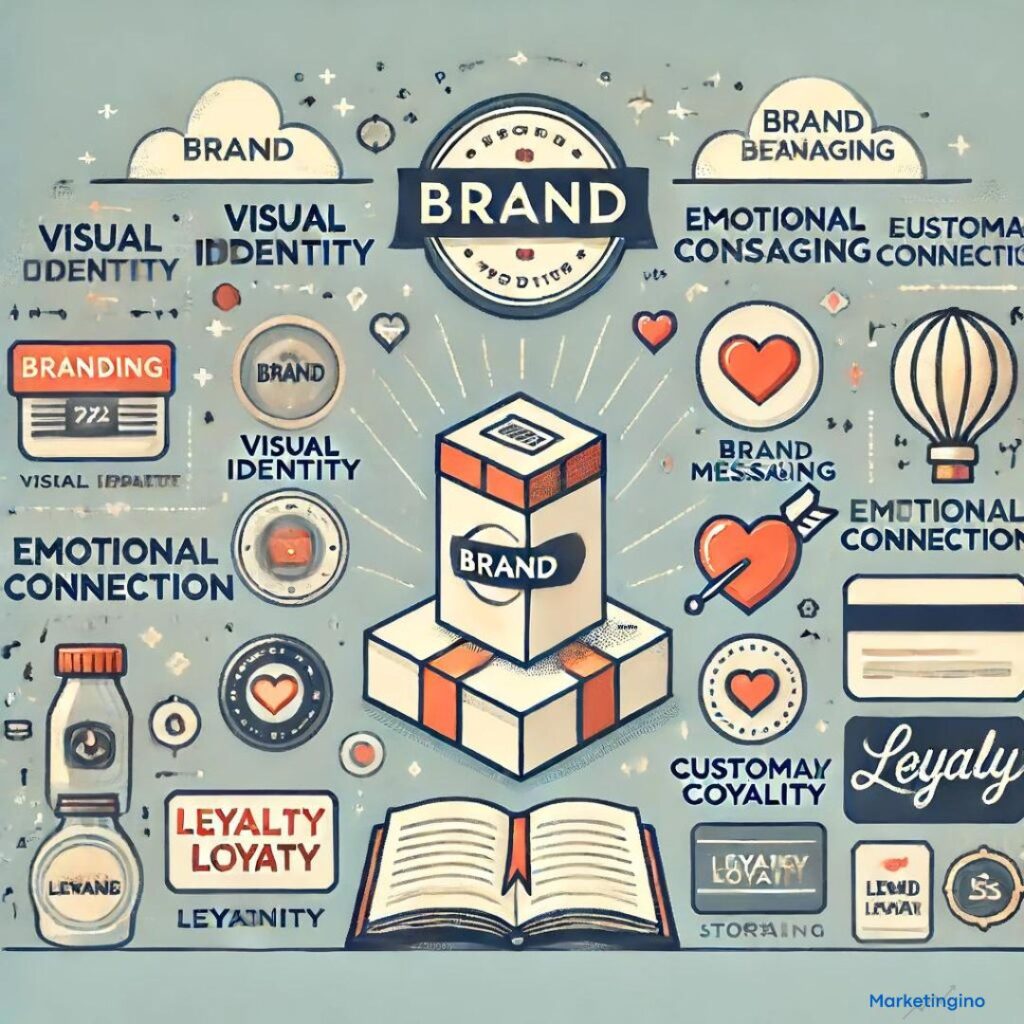Branding is a powerful marketing strategy that involves promoting a product or service by associating it with a particular brand. This process goes beyond just creating a logo or a catchy tagline; it’s about creating a unique identity and experience that resonates with consumers and differentiates a product or service in the marketplace. By leveraging branding, businesses can build loyalty, increase recognition, and drive sales. Let’s delve into how this works and why it’s essential.
The Power of Branding
Branding is about creating a distinctive image and identity for a product or service. It encompasses the name, design, and symbols associated with the brand, as well as the overall customer experience. A strong brand tells a story, evokes emotions, and establishes a connection with its audience. Here’s how branding helps in promoting products and services:
- Differentiation:
- In a crowded market, branding helps a product or service stand out. A unique brand identity makes it easier for consumers to recognize and choose your offering over competitors.
- Recognition and Recall:
- Consistent branding across all touchpoints ensures that consumers remember your product or service. This recognition can lead to higher recall rates when they’re ready to make a purchase.
- Customer Loyalty:
- A strong brand fosters trust and loyalty. When customers have positive associations with your brand, they are more likely to become repeat buyers and brand advocates.
- Perceived Value:
- Effective branding can enhance the perceived value of a product or service. Consumers are often willing to pay a premium for brands that they associate with quality, reliability, and status.
- Emotional Connection:
- Brands that connect emotionally with consumers create lasting relationships. Emotional branding can turn customers into passionate supporters who share and promote the brand within their networks.
Key Elements of Successful Branding
To effectively promote a product or service through branding, businesses need to focus on several key elements:
- Brand Identity:
- Develop a cohesive brand identity that includes the name, logo, color palette, typography, and design elements. This visual identity should be consistent across all marketing materials and channels.
- Brand Messaging:
- Craft clear and compelling messages that communicate the brand’s values, mission, and benefits. The tone and voice should reflect the brand’s personality and resonate with the target audience.
- Brand Experience:
- Ensure that every interaction with the brand, from the website to customer service, provides a positive and memorable experience. Consistency in experience reinforces the brand’s promises.
- Storytelling:
- Use storytelling to create a narrative around the brand. Stories humanize the brand, making it relatable and engaging for consumers.
- Emotional Appeal:
- Tap into the emotions of your audience. Emotional branding creates a deeper connection and can influence purchasing decisions more effectively than rational arguments alone.
- Brand Loyalty Programs:
- Implement loyalty programs to reward repeat customers. These programs encourage ongoing engagement and reinforce positive associations with the brand.
The Impact of Branding on Promotion
When a product or service is effectively branded, it becomes much easier to promote. Here’s how branding amplifies promotional efforts:
- Increased Reach:
- A recognizable brand can reach a broader audience through word-of-mouth and social sharing. Loyal customers often become brand ambassadors, spreading the word organically.
- Enhanced Advertising:
- Branding provides a foundation for all advertising efforts. Ads that are aligned with the brand’s identity and messaging are more effective in capturing attention and driving action.
- Stronger Market Position:
- A well-branded product or service commands a stronger position in the market. It can compete on factors other than price, such as quality, reputation, and emotional appeal.
- Long-Term Growth:
- Strong branding supports long-term growth by building a loyal customer base. As the brand grows, it can expand its offerings and enter new markets more easily.
Branding is a critical aspect of promoting a product or service. By creating a unique and memorable brand identity, businesses can differentiate themselves in the market, build customer loyalty, and enhance their overall marketing efforts. Successful branding involves a combination of visual identity, compelling messaging, positive customer experiences, and emotional connections. When done right, branding transforms products and services into trusted and beloved market leaders.




